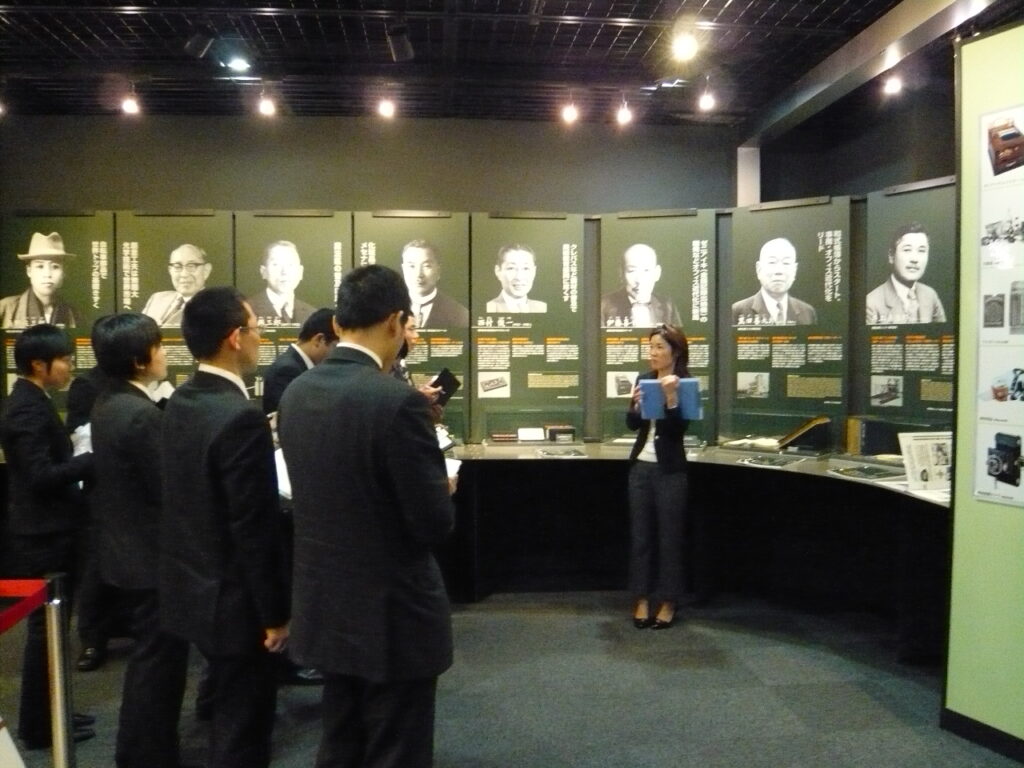
Explore Osaka through Entrepreneurs Who Contributed to World Expositions
Date|every other day
Chuo-ku, Osaka City
2025.1.28
America-mura, known as one of Kansai’s leading hubs for youth culture. We spoke with artist GIMA Kenta, who is working tirelessly to “make Ame-mura even more exciting” with the Expo 2025 Osaka, Kansai in mind.

Project
People
Keyword

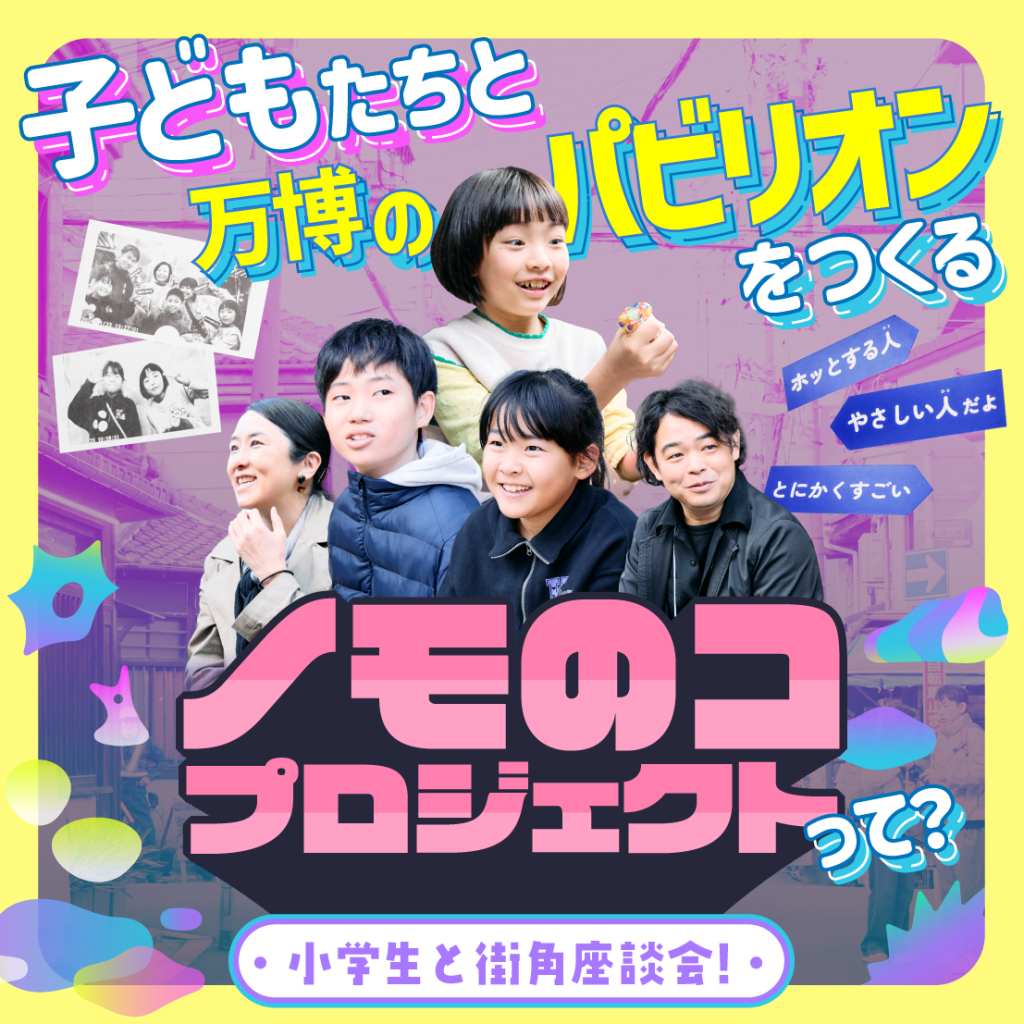
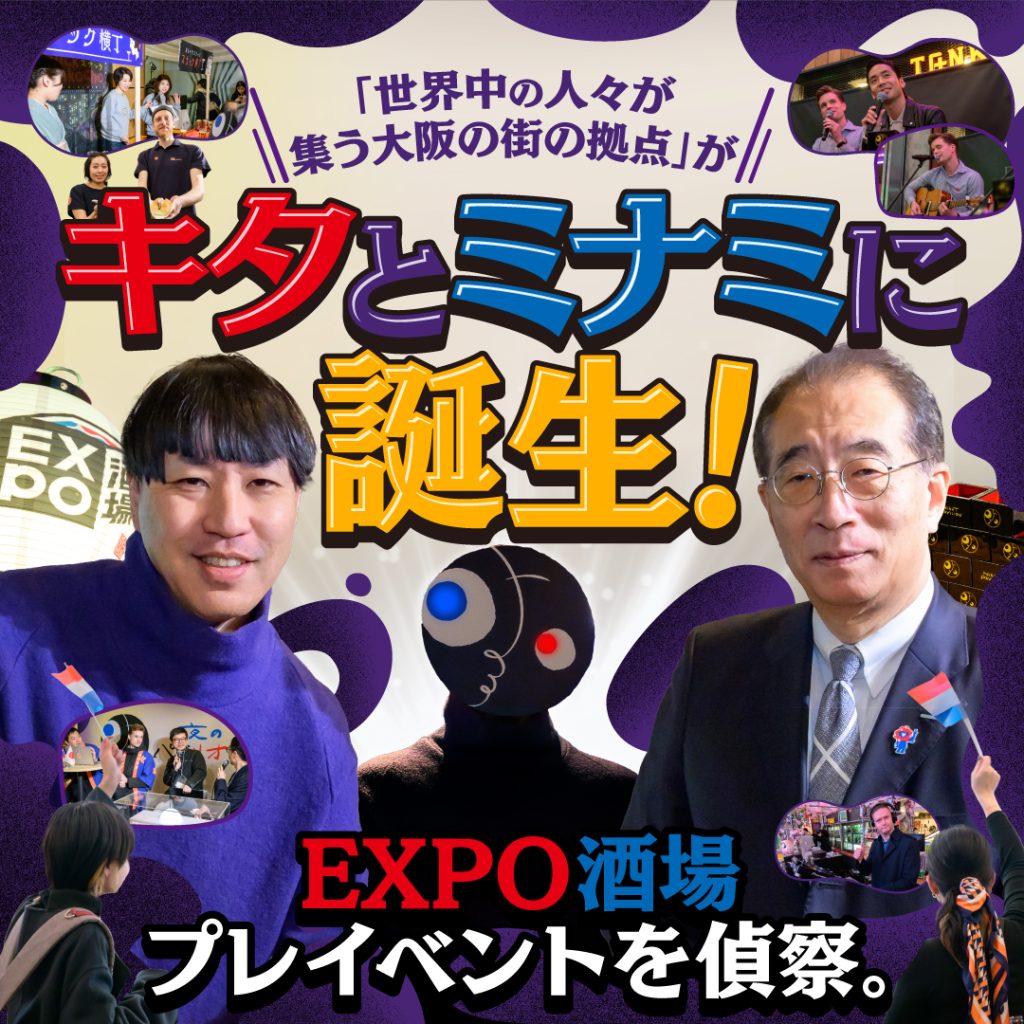
INDEX
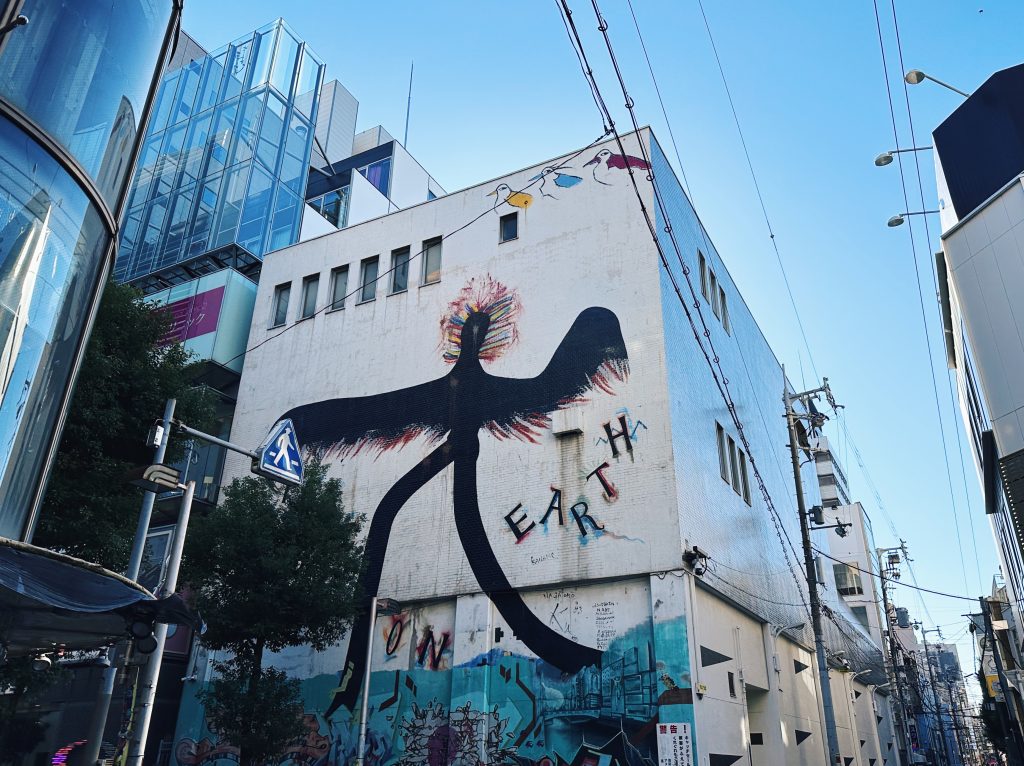
America-mura (hereafter “Ame-mura”) is the nickname for the area in Nishishinsaibashi, Chuo Ward, Osaka City, centered around Sankaku Park (Mitsu Park), where youth-oriented shops are concentrated. With about 2,500 establishments including apparel and general goods stores, restaurants, record shops, clubs, and live houses, it has long led Kansai’s youth culture as the hub of Osaka street culture.
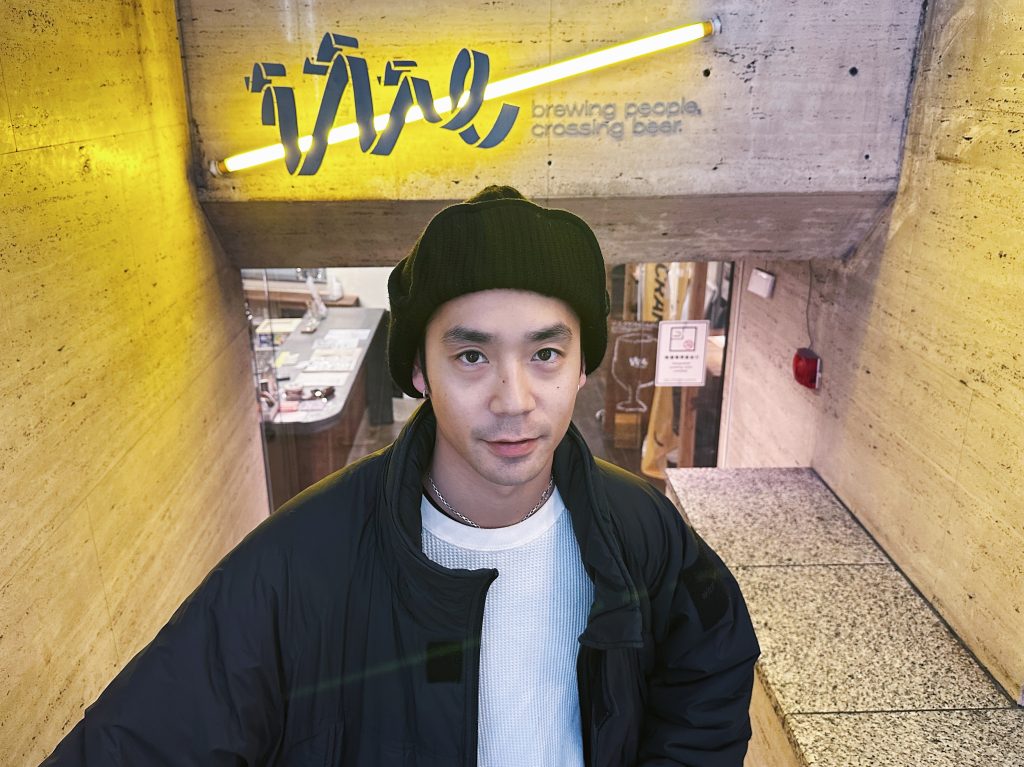
One person drawing attention as a key figure for Ame-mura’s future is GIMA Kenta, frontman of the band “I was born” and manager of the craft beer shop and gallery iiie. Active mainly in Ame-mura, he was also prominently featured in the July 12, 2024 broadcast of NHK’s Kansai Netsu Shisen “Ame-mura Special,” which became a hot topic.
With the Expo 2025 Osaka, Kansai in sight, GIMA launched a team called “AMEMURA Re:SAIKOO”. We spoke with GIMA Kenta, who is eager to “make Ame-mura even more awesome!”
![]()
GIMA Kenta
Born in Taisho Ward, Osaka in 1991. Height 187cm. Vocalist/Guitarist and super entertainer of the band “I was born”. Member of freelance team “PIXELGRAM”. Manager of the craft beer store and gallery “iie” in Americamura (“Ame-mura”). Leader and dominator of “AMEMURA Re:SAIKOO”.
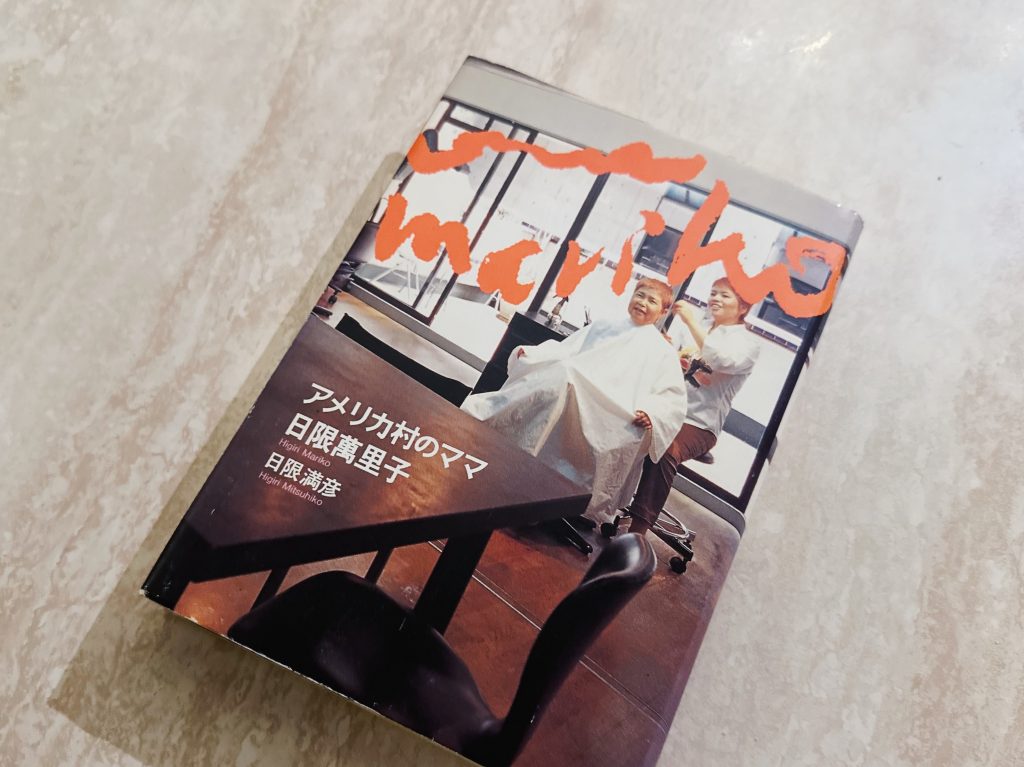
Nishishinsaibashi in Chuo Ward, Osaka City—where America-mura is located—was known in the Edo period as “Sumiyamachi” (Coal Merchants’ Town), because charcoal was brought upstream from Osaka Bay via the Dotonbori River and traded there. In 1969, the year before the Osaka Expo, the area had become a quiet warehouse district. It was then that HIGIRI Mariko, later known as the “Mama of Ame-mura,” opened the café LOOP, sparking a new gathering place for young people.
The name “America-mura” took root as shops selling imported goods and fashion from the U.S. began to appear. As a town where people could connect with America, it drove the surf and American casual boom, and by the 1990s had become a “trend hub” drawing young people not only from Kansai but from all across Japan.

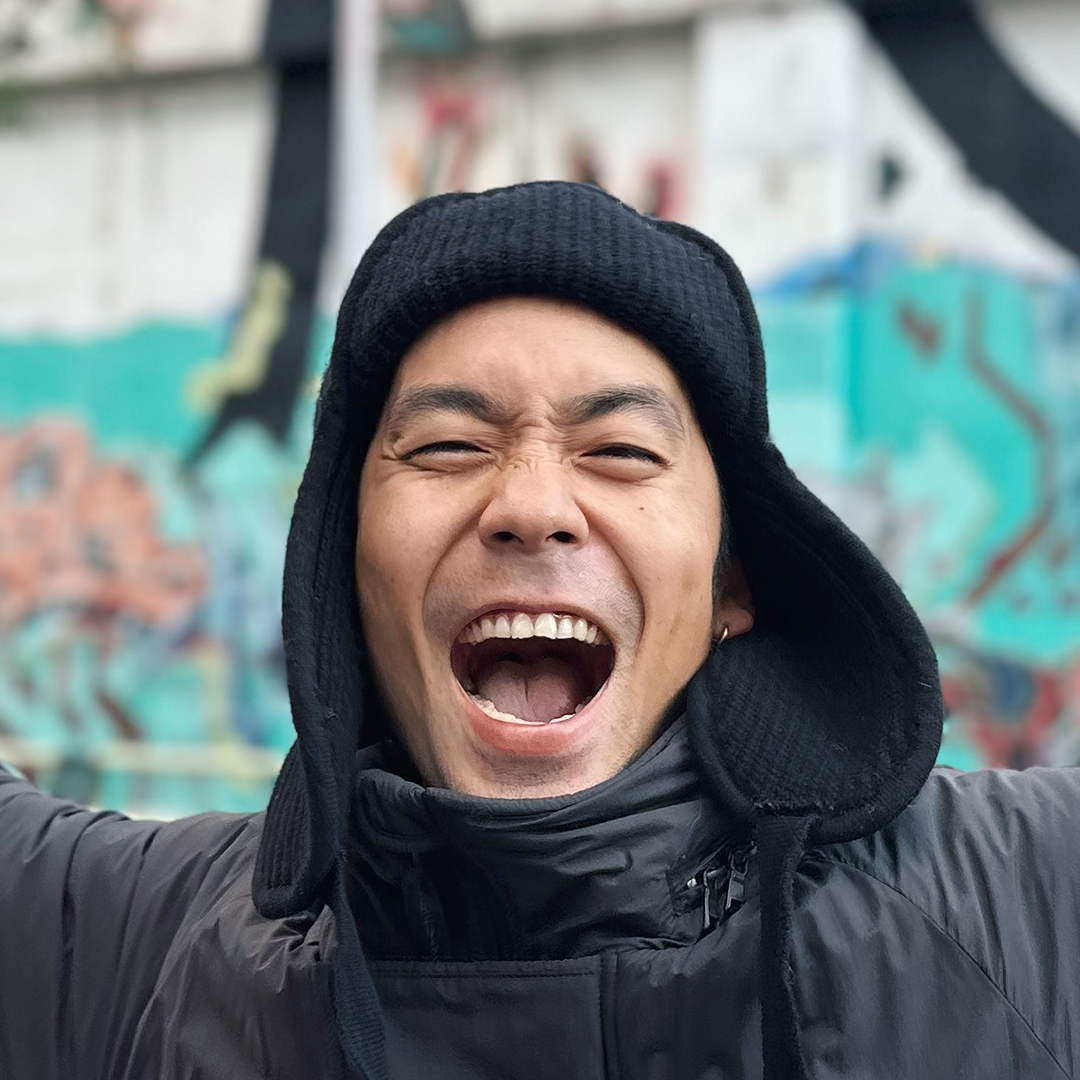
The fact that a single person opening a shop could attract people—that’s really something remarkable. It’s well known that comedian Kanpei Hazama, who once worked at LOOP, joined Yoshimoto Kogyo through an introduction from HIGIRI Mariko. But it wasn’t only people in fashion—comedians, musicians, and young creators of all kinds gathered there. Still, I think America-mura’s growth owes a great deal to the America-mura Union, the neighborhood association formed in 1982 under HIGIRI Mariko’s leadership. Shop owners in Ame-mura came together, held town-wide events, and succeeded in drawing in the youth.
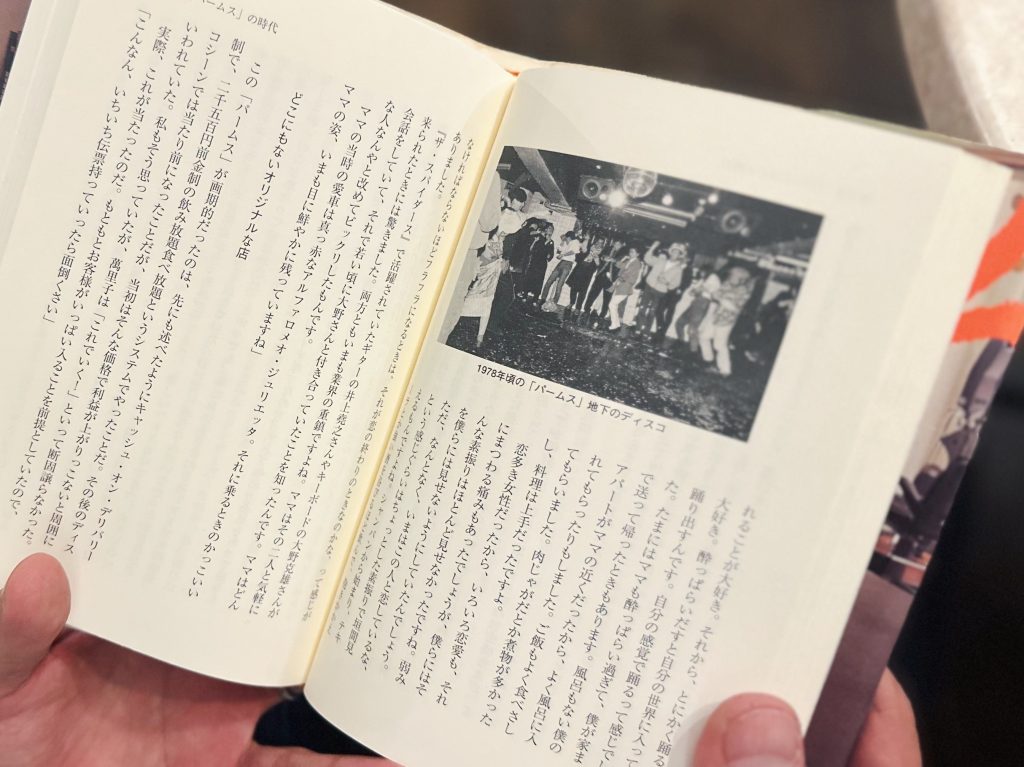
GIMA first began coming to Ame-mura when he was in his senior year of high school. For him—who until then had been living what he called a “boring everyday life”—Ame-mura felt like an exciting jungle.

Back in high school, I went a year and a half without speaking to anyone, by my own choice. School just wasn’t interesting, and I kept thinking, ‘Why is everyone around me so dull?’ Even when I came up with something fun, no one would jump in with me. The frustration built up, and one day I just snapped and stopped talking altogether. After that year and a half, I started working part-time at a multi-story parking lot in Ame-mura. At that time, to me, Ame-mura really felt like a jungle (laughs).
“Coming here, I realized I could set myself free and take the first step toward new challenges. Whether it’s music, art, or fashion, you can express yourself however you like.” With that realization, GIMA started his musical activities while working part-time in Ame-mura.


Ame-mura is a town where creators gather, but it’s not stiff or formal—it’s warm-hearted and has the depth to embrace minorities. I once worked part-time at the ‘Ame-mura Shain Shokudo’ cafeteria, and both the owner and the customers treated me like I was a relative’s kid. It felt like a second home. There were so many fascinating people—skaters, tattoo artists, comedians, chefs—and they all listened seriously to what I had to say. Back in high school, I blamed everyone else for how dull life felt, but the truth is I wasn’t trying to find or create a place where I belonged.
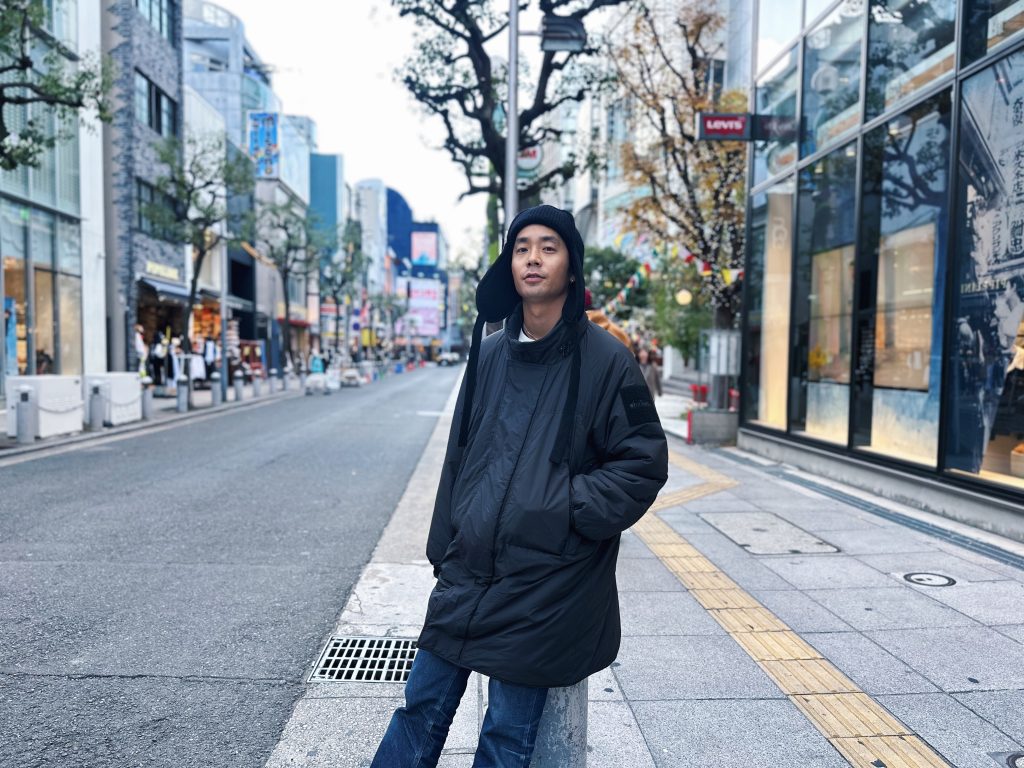
However, while Ame-mura once led the way in fashion trends, that role has now shifted to areas like Horie and Kita. Economically, Ame-mura has prospered, but with rising land prices and the increase of commercial facilities, the reality today is that there are hardly any vacant spaces left for young people to take on new challenges.

Honestly, with more Tokyo-based trend shops and chain stores, Ame-mura just isn’t that interesting anymore. But I don’t want it to end with people saying, ‘It was better in the old days.’ I love this town, and I want to keep being part of its energy. After COVID, the number of late-night spots has gone down, but with the Expo 2025 Osaka, Kansai ahead, I want to bring back that nighttime vibrancy. In the daytime, families and teens gather; in the evening, creators and office workers after hours; and late at night, restaurant staff after closing. A place where everyone can enjoy themselves together, including tourists from Japan and abroad. That gradation of people is one of the great things about Ame-mura.
To create new culture themselves, Gima and his team have been hosting a circuit-style festival called “Ame-mura Tengoku” since 2016, mixing music, art, comedy, and more.

Then in 2023, on the former site of digmeout ART&DINER, which had been a crossroads for many artists, he opened the craft beer specialty shop iiie. As manager, GIMA has been involved in everything from spatial design during its launch to booking events where young people can express themselves.
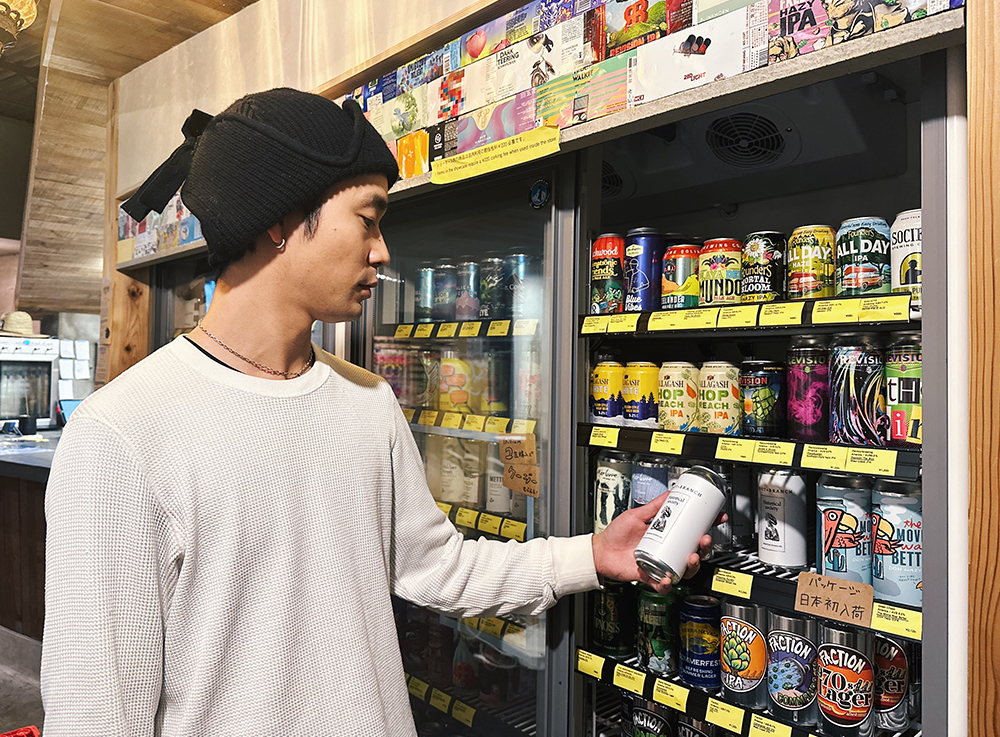

Mr. FURUYA, the former manager of digmeout, has been one of the key figures supporting and developing Ame-mura’s culture. Following FURUYA’s vision, iiie hosts galleries, in-store live performances, and various events. The pioneers created spaces where people could feel, “In Ame-mura, it’s okay to show your individuality.” Respecting those who shaped Ame-mura’s culture, including HIGIRI Mariko, GIMA now aims to become the person who creates the next spaces for the young generation.
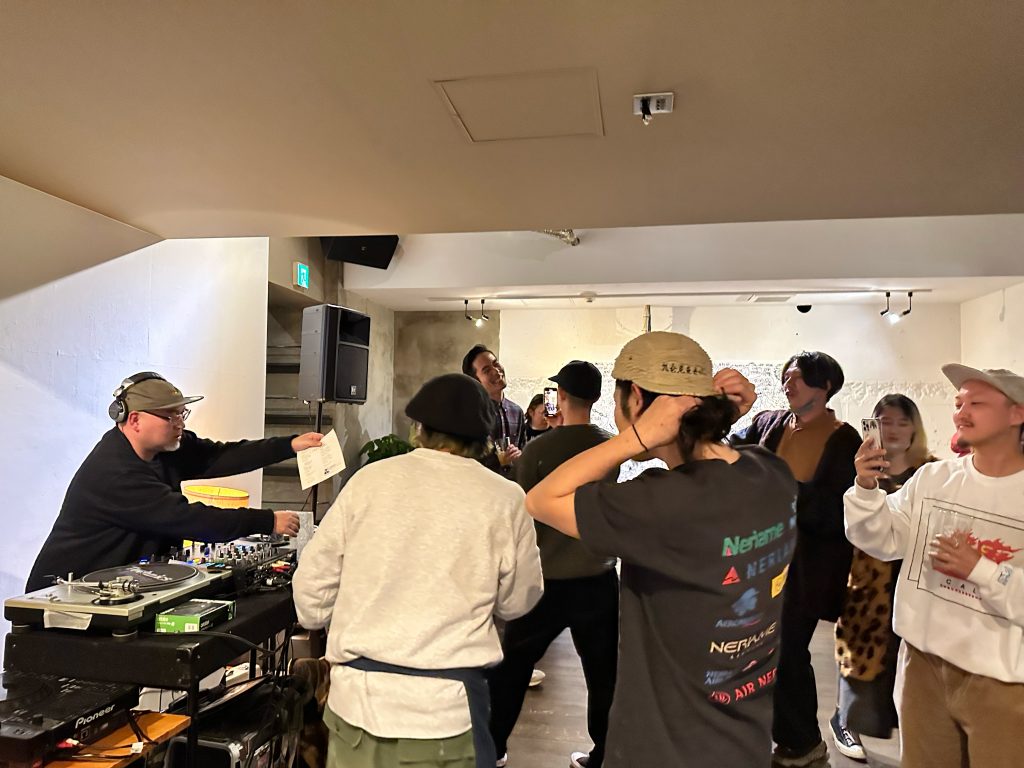
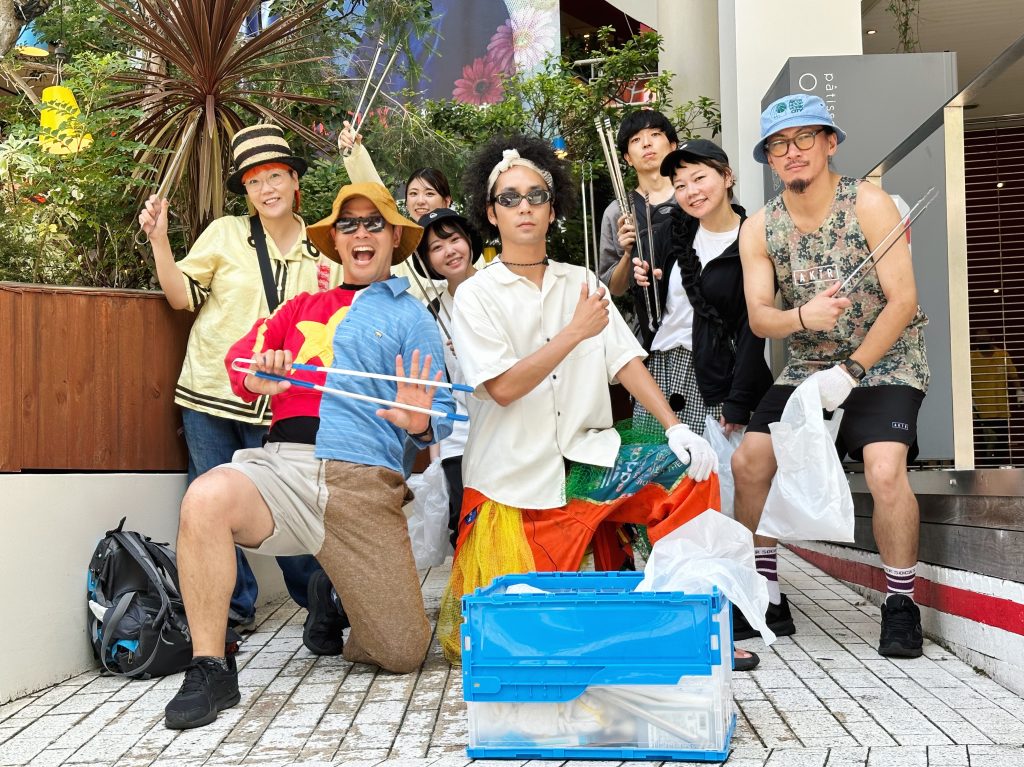
In 2024, to create a new neighborhood association led by young people, creators and shop owners who love Ame-mura came together to form AMEMURA Re:SAIKOO.

AMEMURA Re:SAIKOO is an extension of activities I’ve been doing, such as Ame-mura Tengoku and iiie. Ame-mura might be the most “Osaka-like” place in the city. It’s a space where people aren’t just working—they’re doing what they love. I don’t want that spirit to fade, and above all, I want to shout together with everyone, “Ame-mura Saikoo!” As part of AMEMURA Re:SAIKOO, we hold a trash-picking parade called “Gomi-Pa” twice a month, combining city exploration, beautification, and social interaction. It’s not just about cleaning up the town; it’s also a self-expression demonstration where fashionistas, musicians, dancers, and other creators gather. It’s fun to watch, even more fun to participate in, and aims to become a “new entertainment” in Ame-mura.
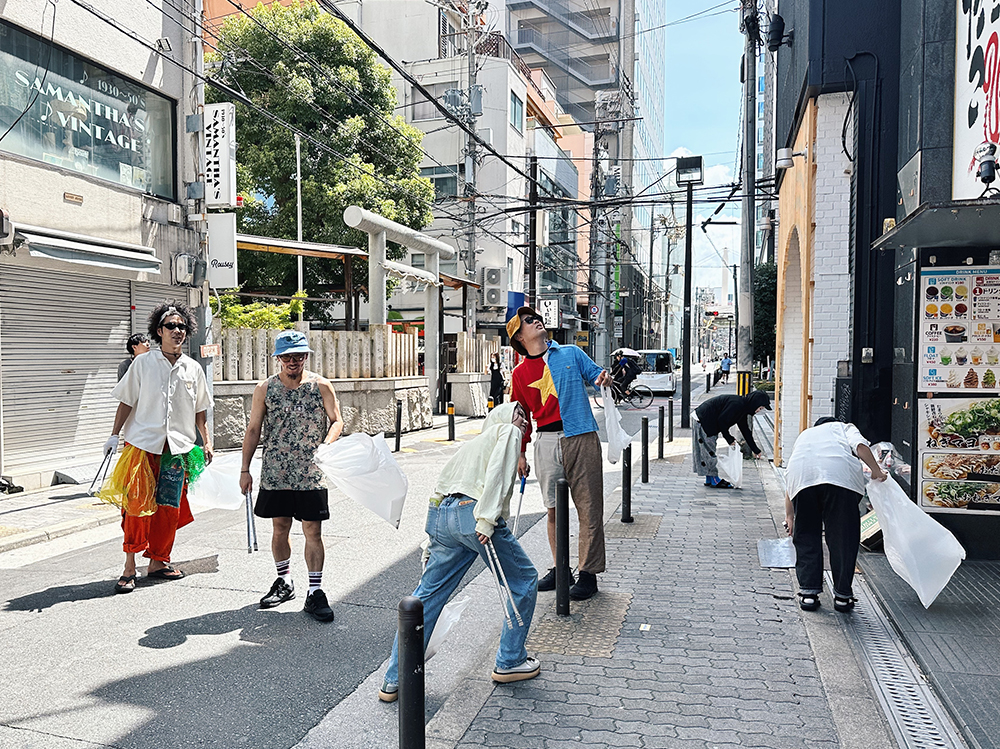


Participants include shop owners in Ame-mura and creators based in the area, with even spontaneous participation from university students coming from Kyoto. While picking up trash, they also serve as guides, introducing new stores, hidden streets, and mysterious spots. By setting rest and hydration points at local eateries, participants can discover recommended spots that aren’t shown on any map.
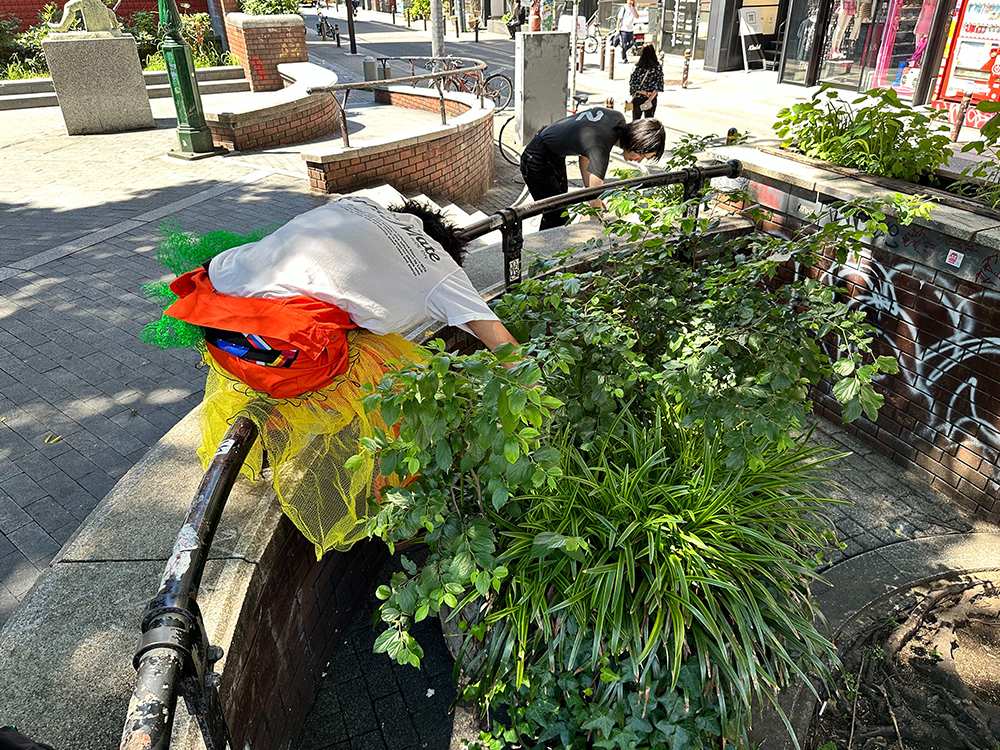
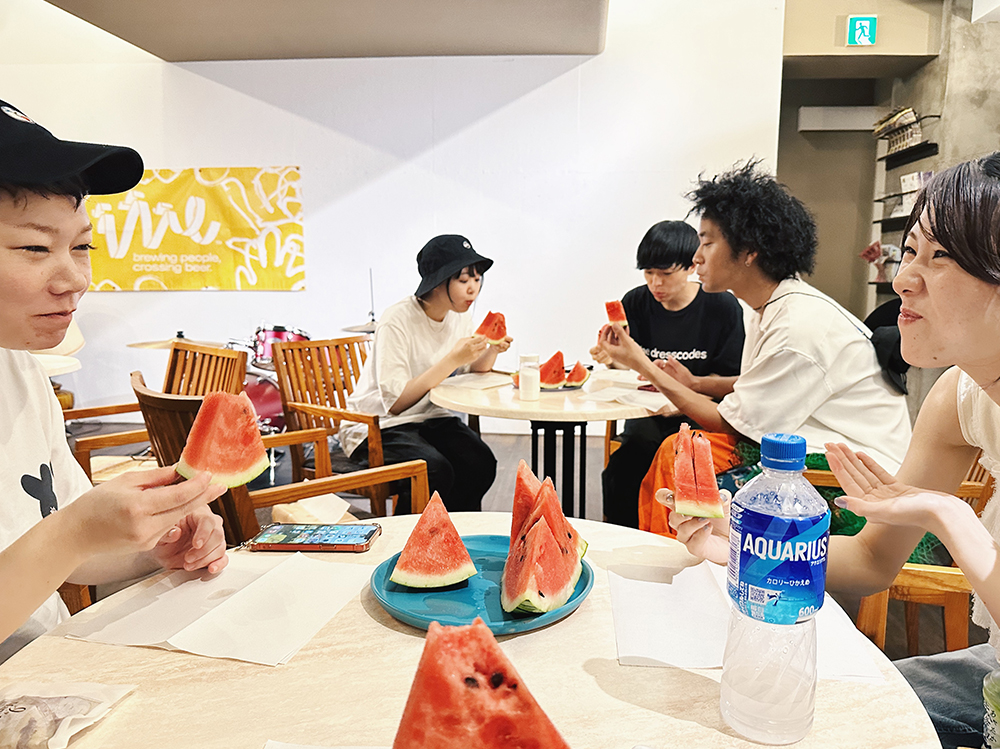

It wasn’t about charity. I wanted to create a space where interesting people could gather and interact. Picking up trash while strolling around leads to new discoveries, cleans up the town, and achieves many things at once. When someone visits Ame-mura for the first time, by their next visit they’ll know how to navigate the area and can even guide others—that would be fun.
“During the Expo, I want to turn it into a large parade where more people who want to express themselves can gather, playing instruments and dancing while beautifying the town,” says Gima. He aims for it to become a famous Ame-mura attraction that makes tourists instinctively reach for their cameras.
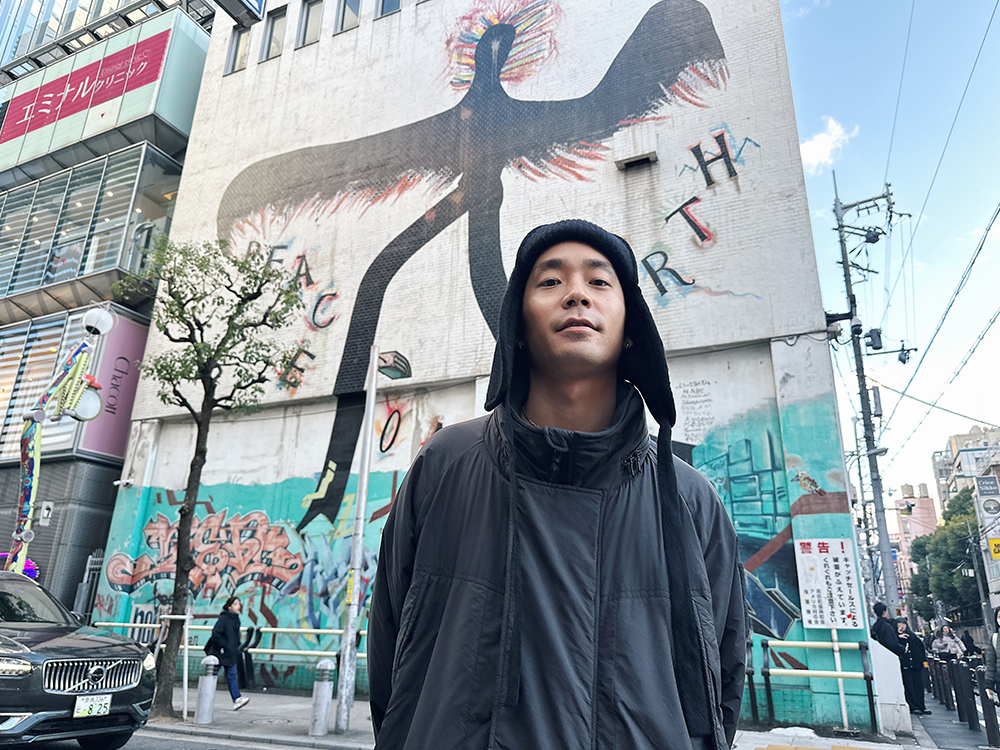
Looking ahead, Gima talks about “staging a major event in 2025” to energize the Osaka-Kansai Expo.

I want to create Ame-mura’s biggest festival yet, with food stalls on Midosuji, and events at Sankaku Park, Big Step, and even along the riverside. Night markets and parades, too—making the town a place where everyone can freely express their individuality. Musicians will play while dancers perform, and everyone can showcase their skills and passions. The goal is a festival town like Khaosan Road in Bangkok, Thailand.
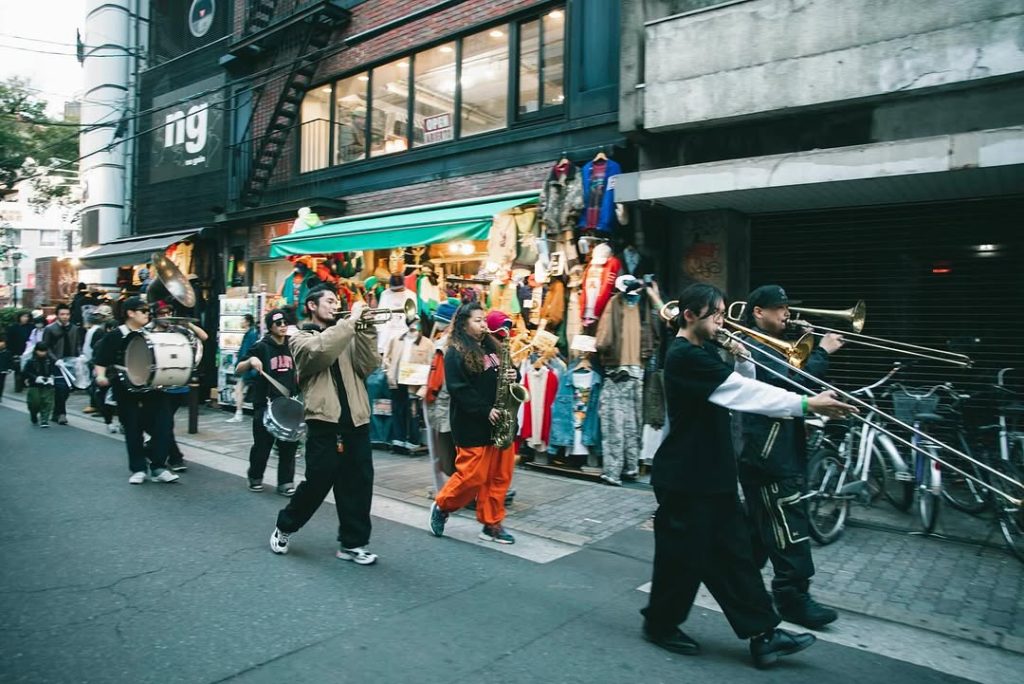

Back in 1982, when the America-mura Union was formed, a town-wide event called the “America-mura Festival” was held simultaneously with the Midosuji Parade. It featured moving DJs, costumes, roller-skate parades, as well as comedy acts and fashion contests—essentially the forerunner to what I have done with Ame-mura Tengoku and iiie. Now, I believe we can create an even more diverse, chaotic, and truly Osaka-style event. And with everyone contributing their own sound, we can play the ultimate “Saikoo.”
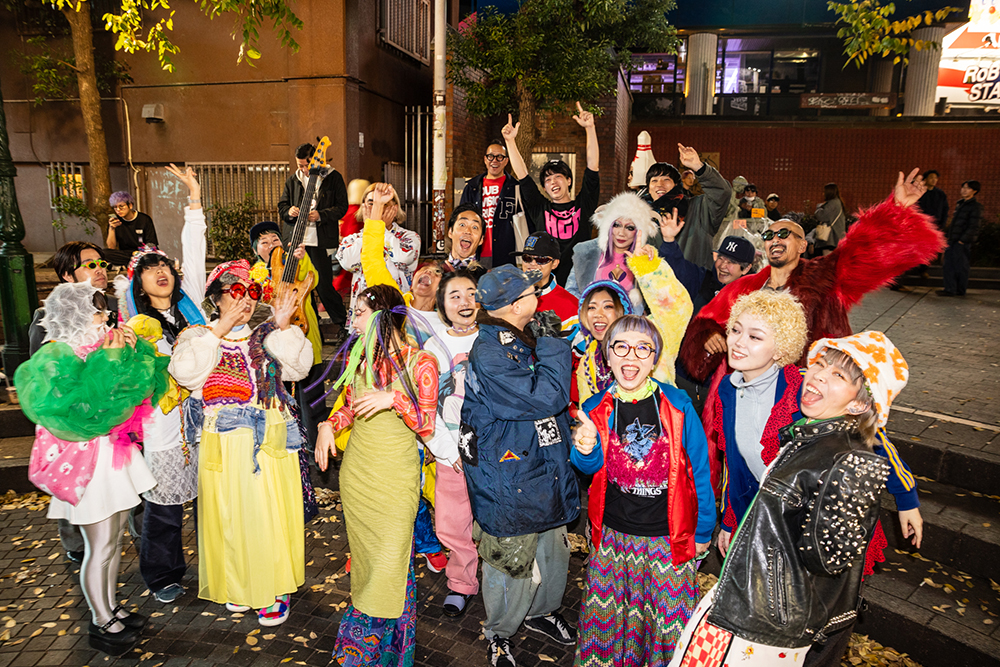

Ame-mura was once a place to meet friends, shine with individuality, and express oneself. I don’t want the brilliance of those “Saikoo!” days to remain in the past. With the Osaka-Kansai Expo approaching, now is the time to create a new “Saikoo!” in this town.
Even those who left Ame-mura as adults should feel again, “Ame-mura is Saikoo!” And for the next generation, it should serve as a starting point to take on new challenges. To carry the naturally born culture and energy of this town into the future, GIMA’s challenge continues.
Interview & Text: TOMIMOTO Rie, OKAJIMA Ayano
Planning & Editing: Ningen Editorial Team